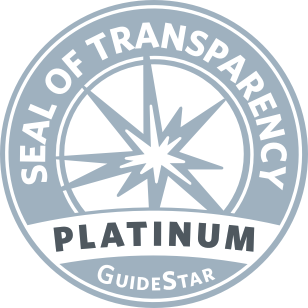A comorbidity, or overlapping conditions, is when two or more conditions or diseases are present at the same time in a patient. For example, it is not at all unusual for a patient with irritable bowel syndrome (IBS) to have fibromyalgia. This is a condition marked by pain, fatigue (tiredness), and tenderness in certain areas of the body.
It is estimated that at least 50% of patients seen in primary care or by gastroenterologists have at least one comorbid condition.
Researchers have also found that the more conditions a patient has, the more severe their IBS is likely to be. The reasons for this are not fully understood but may be related to genetics, inflammation, or infection in the body.
Comorbidities that are common in IBS can be divided into 3 areas. They include
- conditions that affect the gastrointestinal (GI) tract (the mouth to the anus,)
- conditions that affect other areas of the body and,
- psychological disorders.
Overlapping Conditions in IBS
Dyspepsia
Dyspepsia is a very common condition shown to affect 12-30% of the population. The term dyspepsia refers to pain that is experienced in the central area of the belly right below
the rib cage.
Symptoms of dyspepsia include:
- Burning in the central area of the belly right below the rib cage
- pain in the central area of the belly right below the rib cage
- feeling full quickly when you eat (early satiety)
- feeling uncomfortably full after a meal
Your healthcare provider may test for dyspepsia by performing an upper endoscopy using a long flexible tube called an endoscope. The endoscope is placed into the mouth, down the esophagus, and into the stomach and beginning of the small intestine. This tube has a camera and light on the end. This allows your physician to see insure your GI tract during the test.
About one third of IBS patients have functional dyspepsia.
Heartburn
Heartburn is often a symptom of gastroesophageal reflux disease (GERD). GERD occurs when the fluid in the stomach flows back into the esophagus. Some reflux of acid or bile can be normal (as in an occasional burp). When the symptoms of chest squeezing or burning occur frequently after eating or at night, it is often called heartburn. Other symptoms may include difficulty swallowing, frequent nighttime regurgitation, chest pain, and a feeling of a lump in the throat (globus).
Many patients with IBS have heartburn. This often requires separate treatment with acid reducing medications and lifestyle changes.

Celiac Disease (Sprue)
This is an auto-immune disorder that is triggered by a protein called gluten. Gluten can be found in wheat, barley, and rye. This disorder causes inflammation which leads to damage of the cells lining the small intestine. Patients do not absorb their food properly as a result of the damage. The GI symptoms of celiac disease can mimic IBS. Diarrhea, bloating, abdominal pain and/or constipation are the most common symptoms.
Celiac disease is diagnosed by blood tests and an endoscopy. Blood tests show the body’s response to gluten. Both tests need to be done while the person still has gluten in their diet.
The primary treatment is the removal of gluten from the diet. Many patients with celiac disease experience IBS symptoms. Only a very small percentage of patients with IBS symptoms actually have celiac disease. Even when the lining of the small intestine heals, some people with celiac disease still have IBS symptoms.
If you suspect that you have celiac disease, it is important to work with your healthcare provider to obtain a diagnosis before removing gluten from your diet.
Inflammatory Bowel Disease (IBD – Crohn’s and Ulcerative Colitis)
These disorders are marked by an inflammatory response in the bowels. Damage only occurs to the lining of the colon in patients with ulcerative colitis. Patients with Crohn’s disease may have damage anywhere along the GI tract (the mouth to the anus.)
Similar to celiac disease, many IBD patients will report IBS symptoms. Only a very small percentage of patients with IBS symptoms have IBD. In IBD patients, even when the inflammation is under control, about a third may have symptoms of abdominal pain, bloating and altered bowel function. Therapies for IBS can sometimes be used in IBD patients to better control symptoms.
Non-GI Conditions in IBS
Fibromyalgia
Fibromyalgia is a disorder that is marked by widespread body pain that is accompanied by fatigue, sleep, cognitive and mood issues. This primarily affects soft tissues including muscles, nerves, and tendons. People with fibromyalgia will often have muscle areas that are achy and very sensitive to touch.
Women are affected more commonly than men, affects 2-5% of the overall population. Its prevalence does seem to increase with age. Only about 2% of women between the ages of 30-39 are affected while 7% of patients between the ages of 60-69 may have it. Overall, it is estimated to present in about one-third of IBS patients.

Interstitial cystitis (Painful bladder syndrome)
Patients with this disorder report pain in the area of the bladder, often in the area where the legs meet the bottom of the abdomen (suprapubic area). This disorder is more common in women.
Symptoms include an urgent need to pee (urinate) which occurs frequently during the day and often at night. Patients with interstitial cystitis show no sign of infection and results from a cystoscopy (a test that looks into the bladder) can show either changes on biopsies or be normal.
The actual prevalence of this disorder is about 1 to 5 people per 100,000. Interestingly, survey studies of IBS patients show that the prevalence of urinary symptoms is 20-60% for urinary frequency and 50% for having to wake up at night to urinate or feeling like the bladder does not completely empty.
Migraine Headaches
Migraine headaches are severe (often unbearable) pounding headaches that may take several forms. People often report that light hurts their eyes (photophobia) or they have increased sensitivity to sound or irritability. 13% of men and 33% of women suffer from migraine headaches. Migraine headaches have been found to be increased in patients with other GI disorders, such as celiac disease.
One study showed that IBS patients were 60% more likely than healthy persons to be diagnosed with migraine headaches. Migraines are also more common in persons with a family history of migraines.
Chronic Pelvic Pain
This is a disorder where pain or discomfort, ranging from very sharp to a dull ache, is felt for over six months in the lowest part of the abdomen, often in the area below your belly button and between your hips.
Approximately 14% of women describe having chronic pelvic pain; however, several studies have shown that 29-79% of women with IBS have this condition.
Temporomandibular Syndrome (TMJ)
This is a disorder where there is pain related to chewing. This occurs in the joint located roughly between the temple and the top of the ear. These symptoms are seen in 6-12% of people in the United States. A small study of 25 TMJ patients found that IBS was present in 64%. Another study found that in 270 IBS patients, 16% of them reported suffering from TMJ.
Chronic Fatigue Syndrome (Myalgic Encephalomyelitis)
This is severe fatigue that is often permanent. Patients with chronic fatigue syndrome will have a noticeable decrease in their activity. They experience severe tiredness after exertion and sleep that is not restful. It is common to get dizzy when going from lying down or sitting to standing. People may also have difficulties with clear thinking, thought processes, memory, and/or making decisions or processing information as well as difficulties paying attention. These symptoms can be made worse by stress or exertion, time, pressure, or prolonged upright position. Additional features can be present and can include:
- Muscle pain
- Joint pain without swelling or redness
- Headaches of a new type, pattern, or severity
- Swollen or tender lymph nodes in the neck or armpit
- A sore throat that is frequent or recurring
- Chills and night sweats
- Visual disturbances
- Sensitivity to light and sound
- Nausea
- Allergies or sensitivities to foods, odors, chemicals, or drugs
Psychological Disorders
Anxiety and Depression
In our modern world there many reasons to feel anxious or down (depressed). Anxiety and depression are the two most common psychological co-morbidities in IBS patients. Studies have shown that 54-94% of IBS patients have at least one psychological comorbidity. However, many of these are small studies and it is important to remember that anxiety and depression are common disorders in the general population. Because anxiety and depression can amplify an IBS patient’s GI symptoms, it is important to treat these conditions. Treatment of anxiety and depression in IBS patients often results in overall improvement. This not only includes mental health but also in GI symptoms, particularly abdominal pain.
Learn more about psychological factors in IBS

What is the relationship of all these comorbidities to the treatment of IBS and other functional GI disorders?
Research is helping to gain a better understanding of the treatment of IBS and other functional GI disorders. This has shed light on similar causes for many conditions. Many of the pathophysiologic mechanisms that contribute to the development of these disorders also exist for the comorbidities as well. Pathophysiology refers to changes in body function that occur with a disease. Those mechanisms involve all changes in body organs and functions that can lead to illness.
We are also further learning how the immune system, infection, genetic factors, and stress may be influencing the development of symptoms and these comorbidities may have similar mechanisms causing them.
It is important to discuss all comorbid conditions with your healthcare provider to ensure they have a complete understanding of your overall health.
Adapted from IFFGD publication #157- Overlapping Condition with Irritable Bowel Syndrome (IBS) By: Lucinda A. Harris, MS, MD; Associate Prof of Medicine; Mayo College of Medicine; Scottsdale, AZ; Edited by: William D. Chey, MD, AGAF, FACG, FACP, RFF Nostrant Collegiate Professor, University of Michigan, Ann Arbor, MI










